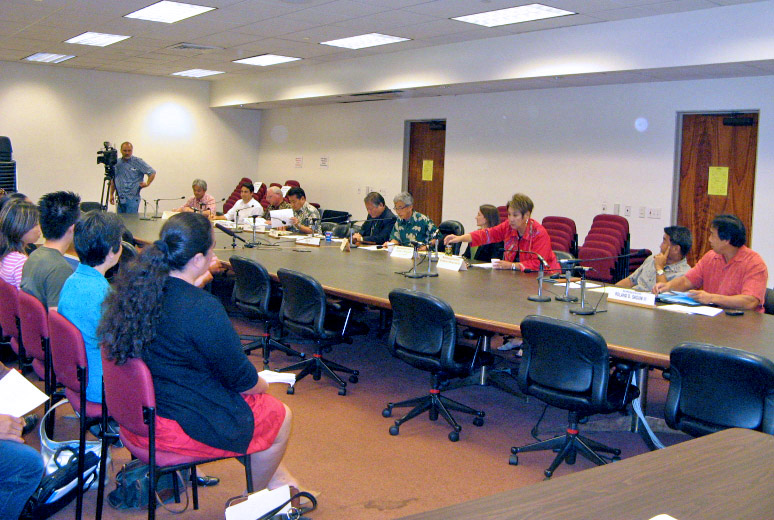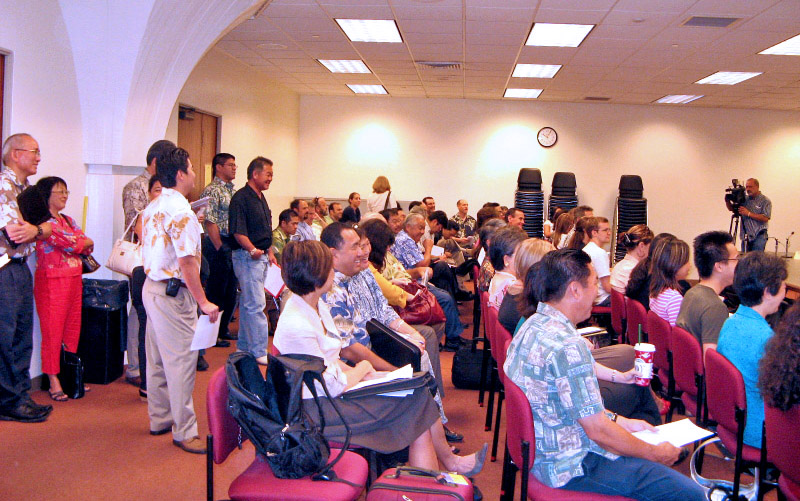Yesterday, the 10th class of Pacific Century Fellows visited our farm.
Here’s a little about the Pacific Century Fellows:
The objective of the Pacific Century Fellows Program is to develop leaders with a greater awareness and sensitivity to the people and institutions of Hawaii. Based on the White House Fellows Program, the Pacific Century Fellows Program will bring together annually up to 25 of Hawaii’s most promising individuals from all walks of life, fields and professions. They’ll gain a broader view of civic duty through direct contact with senior community, social and government leaders. The program encourages the development of long-term relationships between leaders young and old, united in their commitment to find creative solutions to the challenges facing the state.
The people in this program are our future leaders; our best and brightest. What message did I want to get across? I decided to talk about the most important issue facing our state: that Hawai‘i imports 90 percent of its food. How will we make sure we can feed ourselves?
I told them that this is not rocket science. “If the farmers make money, farmers will farm.”
Modeled after the White House Fellows Program and founded by Mayor Mufi Hannemann, the Fellows are chosen on the basis of a written application and personal interview conducted by a blue-ribbon panel of judges. Individuals who are chosen have shown strong intellectual and leadership abilities in the early and mid-stages of their careers, and who have the potential to make significant contributions to the community in the future.
The Pacific Century Fellows Program will provide participants with direct contact with senior community, social, and government leaders. A goal of the program is to nurture relationships among individuals who are committed to exploring creative and constructive solutions to far-reaching challenges facing the state and nation.
I told them that we at Hamakua Springs Country Farms plan at least five years out for a future that we need to be relevant within. And that the physical layout they were seeing was planned five years ago, and is not really where we are now.
What is that future that we must be relevant within? I told them that this simple formula makes sense for us and applies to everyone in Hawai‘i: Net energy return on energy invested, minus the energy used for food production, gives us our life style.
Say it takes one barrel of oil to extract 15 barrels of oil, and it takes two barrels of oil to produce food for a certain number of people. Then our group would have 13 barrels of oil to do everything else – like run lights, pump water, drive to Kona, go fishing, etc. We would be living better than kings in years past.
But it is getting more and more difficult to extract oil. Say, one barrel now can only extract 10 barrels, and it still takes two barrels to grow our food. Now we have only eight barrels instead of 13 to do everything else. This is not rocket science either. It is a simple formula to manipulate.
We need to figure out how we can get the best net energy return on energy invested. And we need to figure out how to lessen our dependence on oil to produce our food.
And other things flow from the principles above:
If done correctly, the Thirty Meter Telescope is a good thing. It can help educate our keiki and help future generations cope.
The E Malama ‘Aina sustainability festival is meant to show people they are not alone as oil prices rise and times start getting challenging.
I am very supportive of geothermal energy use. This is the best source of renewable energy we have here in Hawai‘i. It is a great gift.
Plug it into our formula above and we end up with a better lifestyle. In fact we have so many sources of renewable energy, we can have a relatively better lifestyle than the U.S. mainland.
The reason we pushed the alternate energy loan program through the last legislature is because “if the farmer makes money, the farmer will farm.”
It’s why we support an extra incentive for farmers to develop alternative energy projects.
It’s also why we support a discount for produce transported on Young Brothers’ barges.
We must not lose our focus. We need closer communities – we need to make more friends and we need to be closer to our families. We need to help each other as we face tougher times ahead.
Hawaiians knew how to do this. It is called the Aloha Spirit. And it works best when everyone practices it.
I think President Elect Obama, who grew up here in Hawai‘i, carries the influence of the Aloha Spirit with him, and that is what is making this country hopeful.


